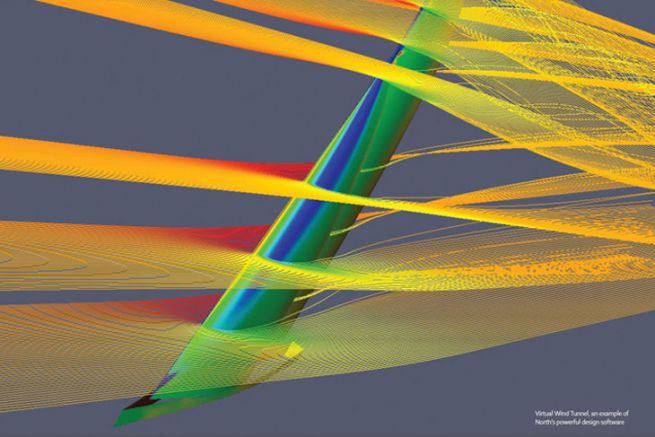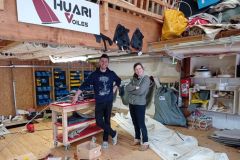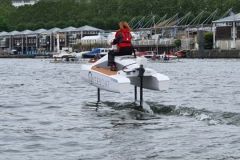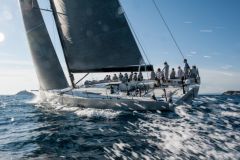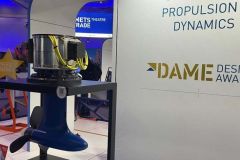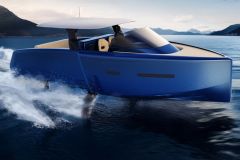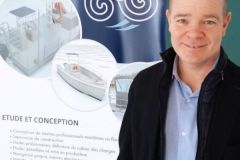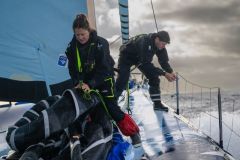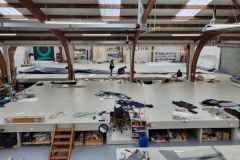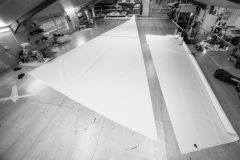In addition to selling sails to shipyards, yachtsmen and ocean racers, North Sails also sells studies. Can you tell us more about them?
Yann Andrillon: There are two main segments of activity.
In the first instance, the North Sails design office provides performance or structural load indications to designers in the pre-project phase. The client may be a naval architecture firm that wants an aerodynamic study for its VPP calculation or a mast manufacturer that wants to know the structural loading on the rig to optimize its sizing. This allows them to steer the development in the right direction, right from the start.
In a second case, we intervene in a more advanced phase of the project, the manufacturing studies being launched. For example, we can study the loads in the wing plan to determine the right horn length or if it is necessary to increase the surface.
How is the research activity organized within the North Sails group?
Yann Andrillon: The North Sails design department is dispersed among the different locations of the sailmaker in the world. Each team deals with subjects proposed locally, but we exchange information regularly and each team has its own speciality on which it is consulted when necessary. Our expertise in aerodynamic design is maintained through internal R&D activities, but also through the secondment of full-time staff to America's Cup teams. This is a good development engine for our calculation codes.
What tools do you use?
Yann Andrillon: We mainly use the calculation solution developed in-house, the North Design Suite, composed of :
- DESMAN? for CAD, rigging and sail modeling
- SPRIAL? to create the "mold" of the sail in 3D
- 3D LAYOUT? to define the structure of the sail
- FLOW?, a potential flow analysis tool on the mast and sails
- MEMBRAIN? for structural finite element analysis
- SAIL SCAN? a tool for comparing actual sail shapes with theoretical shapes from Membrain
- NORTH VPP? for performance prediction
- HULL VPP? for the calculation of hydrodynamic forces on appendages
- VIRTUAL WIND TUNNEL?, a digital wind tunnel
- RACE MODEL?, to analyze the influence of sails and mast on the rating and vice versa
- SPP?, for design and setting comparison and performance analysis in the absence of VPP
- ROUTER, for performance prediction on a given course using historical weather data
- HULL DATA?, a CFD module applied to the hull and appendages to power North VPP
- SAIL COMPARE?, to compare Membrain results
- SAILECT?, for creating sail usage charts
We also use the CFD software OpenFoam.
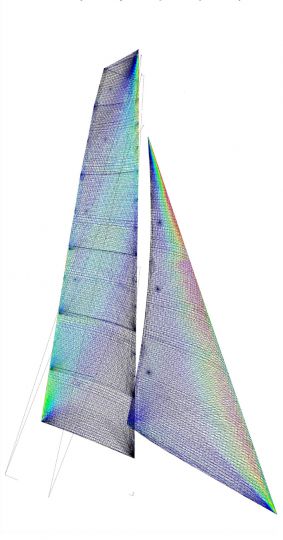
Do you ever work outside of boating?
Yann Andrillon: We sometimes have a few "exotic" projects such as commercial sailing ships or other non-marine applications. This represents about 10% of our activity.
Who are the main clients of the North Sails design office?
Yann Andrillon: We work mainly for ocean racing, where aerodynamic studies have become systematic. The IMOCA classes, Volvo Ocean Race, large multihulls and Maxi boats are major clients. If this remains very limited, we also work for small sailboats racing in IRC.
What is the volume of activity and budget for North Sails?
Yann Andrillon: Today, about 60% of the activity of the North Sails design office is invoiced to external clients (teams, naval architects, mast manufacturers, etc.). The remaining 40% is for internal needs. In these services, the share of performance calculation represents 50%, the study of structural loads completes the activity. The budget of the studies is extremely variable because it depends on the number of operating cases studied. It can start at 5 keuros but go much higher.
How do you see the future of this activity?
Yann Andrillon: It's always difficult to sell "virtual" things like studies, but investing in aerodynamic calculations is now part of the ocean racing way of life. Boat development time is getting shorter and shorter and optimization work upstream saves time by making the right sails immediately. Aerodynamic studies have become essential.
